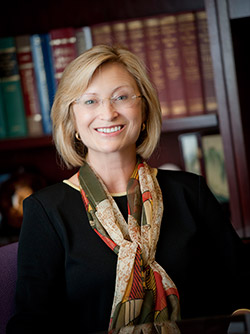
By:
- Paul Kennedy Mueller
Published Date
By:
- Paul Kennedy Mueller
Share This:
The Last Decade in Research: “Startling New Avenues of Discovery”

Sandra Brown
“UC San Diego is a student-centered, research-focused, service-oriented public university with multiple pillars of excellence and strengths across disciplines,” Chancellor Pradeep K. Khosla says. “We are dedicated to educating next-generation leaders and conducting research that addresses our society’s most pressing challenges.”
From her unique perspective as Vice Chancellor for Research – overseeing more than 20 organized research units among other duties – as well as a faculty member with decades of research experience, Sandra Brown says that the most striking change she has noticed in the university’s research enterprise over the last 10 years is the rise of new research combinations, the “strengths across disciplines” touted by the Chancellor.
While “interdisciplinary” and “multidisciplinary” have been used to describe UC San Diego research since our inception, Brown is referring rather to such startling new avenues of discovery as “medicine from the sea,” where oceanography, pharmacology, biology, supercomputing and engineering, for example, collaborate in novel and surprising ways to solve real-world problems.
“Taking on those ‘most pressing challenges’ increasingly involves insights, expertise, technologies and data sets from diverse areas of science and scholarship,” she says. “When titular oceanographers are finding compounds to fight earth-bound diseases such as anthrax, or helping design cook-stoves that reduce atmospheric soot, it’s clear that very robust and creative mixtures of disciplines are forming and evolving.”
Partly this is due to our ability to peer deeper and deeper into the dazzling buzz of matter and energy, so that the traditional lines between chemistry, nano-biology and physics, say, grow blurred.
It’s partly because funding is much more competitive now, and broader projects might attract better success. But it’s also because scientists and scholars quickly recognized that those blurred lines could be liberating, and lead to break-through syntheses and solutions.
Add in the multiplier-effect benefits of tools and expertise now available to them via modern technology (virtual meetings from anywhere on the globe, immersive 3D “excursions” into computer-generated realms, astonishing computing power in the simplest of hand-held devices), and UC San Diego research teams are soon wearing coats of many colors.
“It’s the case for artists, architects, librarians and scholars just as much as for scientists and engineers,” says Brown. “Computers and music, electronics and art, robotics and theatre, archives and supercomputers – the creative partnerships arise from both need and opportunity.”
Our organized research units (ORUs), she says, illustrate the decade’s most notable development in research. The Kavli Institute for Brain and Mind, for example, knits together neuroscientists, cognitive scientists, psychologists, linguists, anthropologists, physicists and engineers – a lab coat of many colors, indeed.
“The name of the Institute of Engineering in Medicine itself tells the story,” Brown says. “Here we have science, technology and engineering translating discoveries into treatments and devices that improve human health. Not so very long ago, the words ‘engineering’ and ‘medicine’ had nothing in common. Now, the combination is dramatically improving health care.”
Key to the success of these kinds of “creative hybrids” is that the swiftly developing – and permanently transforming – trend is being built into the university’s grand strategic plan launched by Chancellor Khosla as one of the first initiatives of his still-young tenure.
“The kinds of desirable changes that are starting to emerge from the planning process – the kinds of changes our institution must undergo to maintain our upward trajectory well into this 21st century – will become part of the strategic plan’s implementation,” says Brown. “The general success of our university will still be supported by ‘pillars of excellence,’ but those pillars will be made of diverse and reinforcing materials.”
For example, she says, consider the strong emergence here at UC San Diego of genetic engineering, especially in using algae for biofuels, vaccines and pharmaceuticals. “Our Center for Algae Biotechnology incorporates international research scientists from the fields of biology, chemistry, engineering, economics, and policy,” Brown says. “In addition to their very aggressive research projects, researchers also train young scientists, educate the public, collaborate with private-sector partners, and help keep regional, state, and national policy-makers informed.”
The “simple” study of algae is an excellent example of the grafting, splicing, and inter-twining of scholarship and sciences now customary in every endeavor.
If we are to be “student-centered, research-focused, and service-oriented,” she says, we’ll need to be aware of research trends – “what, beyond the broad goal of improving society, drives our research? What obstacles -- technical, temporal, monetary or political -- impede our progress? How do we increase or improve our multi-disciplinary – even multi-institutional – collaborations in ways that benefit not only society at large, but each participant in the process?”
Vice Chancellor Brown’s office is situated, suitably enough, in the very center of campus – significantly, perhaps, between the Prebys Music Center and the Stein Clinical Research Building. Both music and medicine, among a host of other mingling currents, are in the air.
“When I consider how research has changed over the last decade, I visualize those twined stands of bamboo that are so popular,” Brown says. “Bamboo is a sturdy individual stalk, but several of those stalks gracefully laced together create a structure far, far stronger.”
Share This:
You May Also Like
Stay in the Know
Keep up with all the latest from UC San Diego. Subscribe to the newsletter today.


